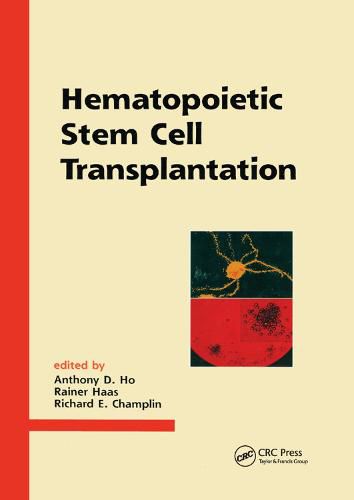Readings Newsletter
Become a Readings Member to make your shopping experience even easier.
Sign in or sign up for free!
You’re not far away from qualifying for FREE standard shipping within Australia
You’ve qualified for FREE standard shipping within Australia
The cart is loading…






This book integrates recent advances in molecular and cell biology of hematopoietic stem cells (HSC) with developments in clinical research in stem cell-based therapy-providing an up-to-date review of novel cytokines and cellular components; animal models; cell preparation, selection, and collection; minimal residual disease and purging; expansion of progenitor cells; allogeneic and autologous transplantation; cellular gene and immunotherapy; and more.
Examines key areas for treatment with HSC, including ambulatory care and monitoring, regimen-related toxicities, immunodeficiency and immunization, infection, chronic graft-versus-host and disease, secondary malignancies, and long-term quality of life. Covering stem cell pool regulation and the complex interplay of extrinsic and intrinsic events, Hematopoietic Stem Cell Transplantation
summarizes current understanding and development of clinical allogeneic HSC transplantation
discusses the use of allogeneic transplantations with reduced conditioning regimen or mini-transplantation
considers various strategies for mobilization of HSCs from peripheral blood (PB) of normal donors
details detection of bone marrow contamination by tumor cells and removal procedures
focuses on efforts to increase the ex vivo transduction efficiency of human HSCs with retroviral vectors
explores the effects of growth factor administration and leukapheresis on PB stem cell donors
shows the impact of CD34+ cell isolation and the relevance of expansion of HSC from bone marrow for clinical use
reveals how minimal residue disease detection assays are crucial for tracking the clinical significance of infused tumor cells
employs automated fluorescence image cytometry to study early HSC behavior following seeding Incorporating contributions from over 90 researchers who cite more than 2180 references to encourage continued study,
$9.00 standard shipping within Australia
FREE standard shipping within Australia for orders over $100.00
Express & International shipping calculated at checkout
This book integrates recent advances in molecular and cell biology of hematopoietic stem cells (HSC) with developments in clinical research in stem cell-based therapy-providing an up-to-date review of novel cytokines and cellular components; animal models; cell preparation, selection, and collection; minimal residual disease and purging; expansion of progenitor cells; allogeneic and autologous transplantation; cellular gene and immunotherapy; and more.
Examines key areas for treatment with HSC, including ambulatory care and monitoring, regimen-related toxicities, immunodeficiency and immunization, infection, chronic graft-versus-host and disease, secondary malignancies, and long-term quality of life. Covering stem cell pool regulation and the complex interplay of extrinsic and intrinsic events, Hematopoietic Stem Cell Transplantation
summarizes current understanding and development of clinical allogeneic HSC transplantation
discusses the use of allogeneic transplantations with reduced conditioning regimen or mini-transplantation
considers various strategies for mobilization of HSCs from peripheral blood (PB) of normal donors
details detection of bone marrow contamination by tumor cells and removal procedures
focuses on efforts to increase the ex vivo transduction efficiency of human HSCs with retroviral vectors
explores the effects of growth factor administration and leukapheresis on PB stem cell donors
shows the impact of CD34+ cell isolation and the relevance of expansion of HSC from bone marrow for clinical use
reveals how minimal residue disease detection assays are crucial for tracking the clinical significance of infused tumor cells
employs automated fluorescence image cytometry to study early HSC behavior following seeding Incorporating contributions from over 90 researchers who cite more than 2180 references to encourage continued study,